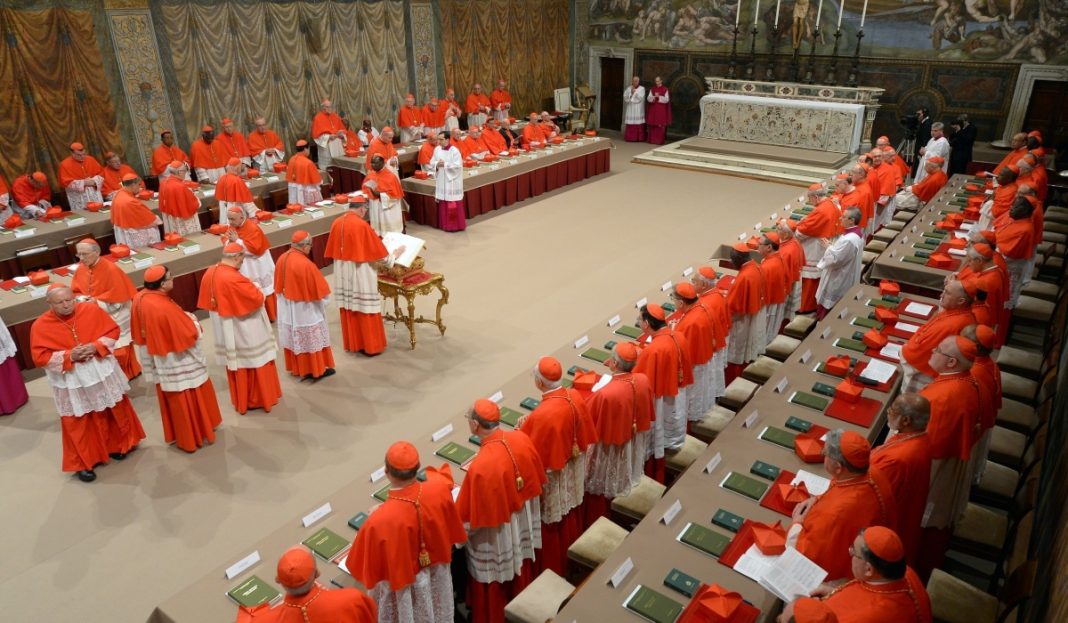A new pope to replace Pope Francis will be elected on Wednesday, May 7, and for the first time in history, Rwanda will be represented in the process. Cardinal Antoine Kambanda, the Archbishop of Kigali, is among 135 cardinals set to enter the Vatican’s Sistine Chapel for a secret conclave to choose the 267th leader of the Roman Catholic Church.
“It’s a moment of national pride. Having a cardinal involved in the universal governance of the Church means the Rwandan Church is now informed and engaged in global Church affairs. This level of visibility did not exist before,” said Father Vedaste Kayisabe, the Secretary General of the Council of Catholic Bishops in Rwanda.
The upcoming conclave follows the death of Pope Francis on April 21, at the age of 88. His passing concluded a transformative papacy characterized by efforts to globalize the Church and broaden representation in the College of Cardinals.
Pope Francis challenged tradition by appointing cardinals from nations that had long been overlooked, promoting a more culturally and nationally diverse electoral body.
This year’s conclave will see cardinals from 71 countries take part, more than in any previous papal election on Wednesday. The cardinals will begin with a mass at St. Peter’s Basilica before entering into isolation, cut off from all forms of outside communication.
The secret voting process will begin in the afternoon, starting with one round of voting and continuing with up to four rounds daily until a two-thirds majority agrees on a new pope.
Each vote is cast on a handwritten ballot bearing the Latin phrase “Eligo in Summum Pontificem” (“I elect as Supreme Pontiff”), followed by the chosen name. If no pope is elected after three days, voting may pause for a day of prayer before resuming.
The outcome of each vote is signaled by smoke emerging from the chapel’s chimney, black for no decision, white for success. Once a decision is made, the new pope is introduced from the central balcony of St. Peter’s Basilica with the iconic words: “Habemus Papam” (“We have a Pope”).
Reverend Father Deogratias Biabandi of the Byumba Catholic Diocese in Rwanda said that Cardinal Kambanda, like every other cardinal, is eligible for election as pope, though not through politics or campaigning, but through the guidance of the Holy Spirit.
“The papal election is not a political process. It is guided by divine will and the inspiration of the Holy Spirit,” he said.
The name of a new Pope
One of the new pope’s first decisions will be to choose a new name, a tradition rooted in Catholic history and symbolism.
While not doctrinally required, the custom of adopting a new name upon election has become an integral part of the papal transition, carrying with it layers of meaning and signaling the vision and values the pope intends to uphold. For example, Pope Francis’s real name was Jorge Mario Bergoglio. His predecessor, Pope Benedict XVI, was born Joseph Aloisius Ratzinger.
The practice dates back to the early Middle Ages. In 533, a man named Mercurius was elected pope. Believing it inappropriate to carry the name of a Roman god, he adopted the name John II, honoring a previous martyred pope.
Though popes continued to use their given names for some time, by the 10th century, it had become common to assume a new name. The last pope to retain his birth name was Marcellus II in 1555.
According to Church historians, choosing a new name represents a spiritual rebirth, a signal that the new pontiff is embarking on a new mission in service to the global Catholic community.
It also reflects continuity with the Church’s legacy, often invoking the memory of saints or predecessors whose values resonate with the new pope’s aspirations.
When Cardinal Jorge Mario Bergoglio became pope in 2013, he chose the name Francis, inspired by St. Francis of Assisi, the 13th-century friar known for his dedication to poverty, peace, and environmental stewardship.
Pope Francis later explained that Brazilian Cardinal Claudio Hummes had told him not to forget the poor during the election, which prompted his immediate association with St. Francis.
Cardinal Joseph Ratzinger, chose the name Pope Benedict XVI in honor of both St. Benedict, a symbol of Christian monasticism and spiritual discipline, and Pope Benedict XV, remembered for his efforts toward peace during World War I. In doing so, Benedict XVI signaled his commitment to tradition, contemplation, and unity.
Papal names are not only personal choices, they often serve as guiding stars for a pontificate. A name like Leo, Gregory, or Pius recalls past popes known for doctrinal firmness, reform, or Church expansion.
For example, 23 popes have taken the name John, partly because of its strong biblical roots and the many saints named John, including John the Baptist and John the Apostle. Benedict has been used 16 times, Gregory 16 times, and Pius 12 times.
Some popes have chosen names used only once, such as Lando, Hilarius, or Conon. Particularly, the name Peter, in honor of the first pope, has never been reused, out of reverence for the apostle whom Catholics believe was appointed by Jesus as the Church’s foundation.
According to the Gospel of Matthew, Jesus said to Simon, “You are Peter, and on this rock I will build my Church.” Peter was eventually martyred in Rome around 64 AD.
Though no official list of prohibited names exists, certain names are traditionally avoided to preserve historical sanctity or prevent confusion. Names tied to tumultuous or controversial periods are also usually passed over. The decision to adopt a name is entirely up to the new pope, but it is often made quickly after the election.
When a new name is chosen, it becomes the pope’s public identity. This name will define how history remembers him, shape how Catholics around the world view his leadership, and set the tone for his approach to doctrine, diplomacy, and reform.
Observers from every continent will be watching closely, not only to learn who the next pope will be, but also what name he will take. For the Rwandan Church, the presence of Cardinal Kambanda in this sacred process symbolizes a new chapter of engagement with the global Catholic community.



